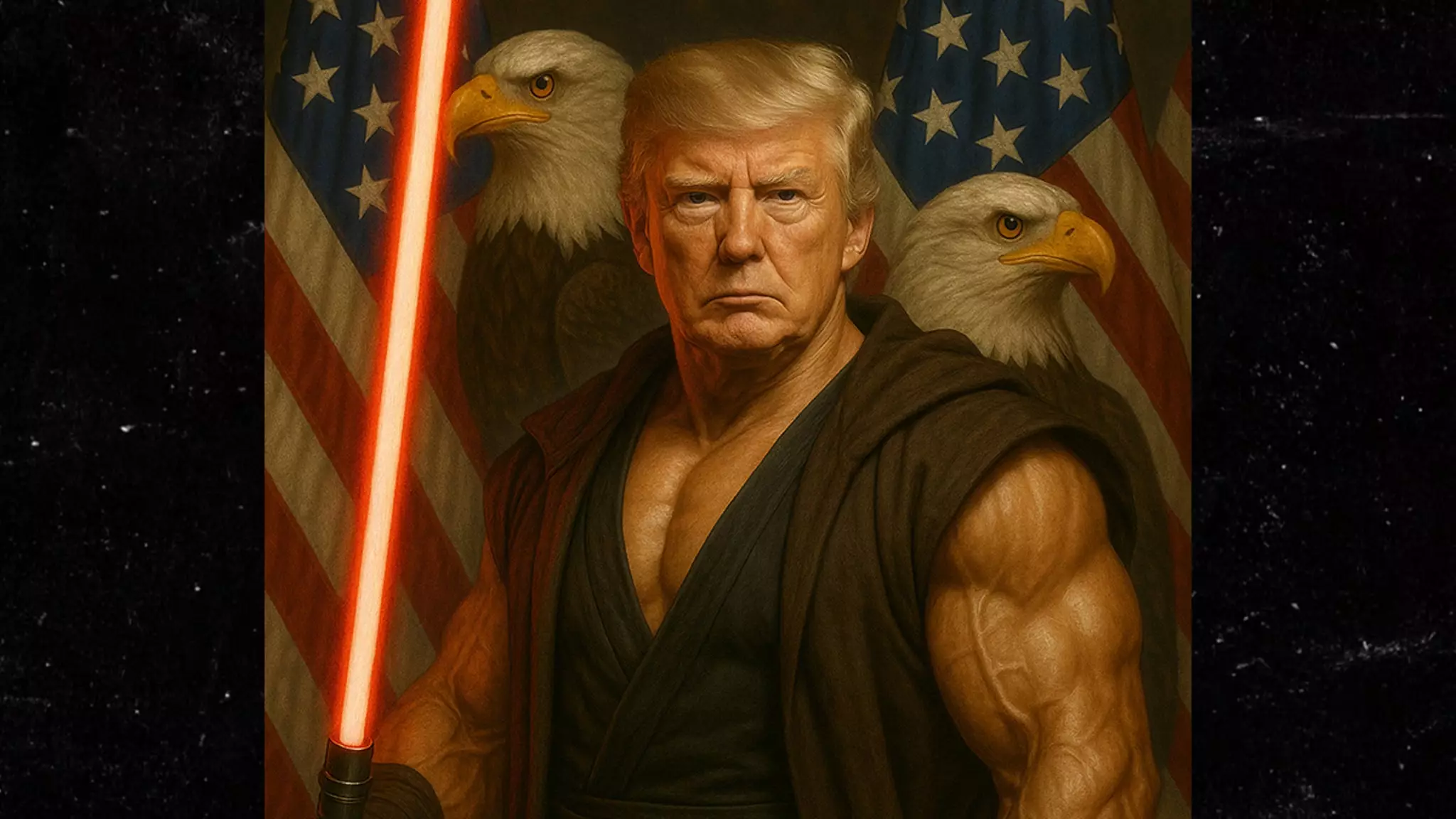In an unexpected merging of politics and pop culture, the White House recently unveiled an AI-generated image of President Donald Trump that captures a pivotal moment in the ongoing narrative surrounding his administration. Celebrating Star Wars Day, or May the 4th, this image portrays Trump as a formidable figure swathed in Sith-like attire. The striking visual features an imposing Trump wielding a bright red lightsaber, accompanied by a backdrop of bald eagles — a quintessentially American symbol of power and pride. This artwork cleverly utilizes the mythology of Star Wars to comment on Trump’s image, resonating with both his supporters and detractors.
Sith Imagery and Political Implications
By adopting Sith imagery, this portrayal challenges traditional narratives. The Sith, renowned as the villains in the Star Wars universe, embody traits often attributed to authoritarian regimes. Indeed, viewers of the film series are acutely aware of how George Lucas drew inspiration from historical dictatorships, notably the Nazis, in crafting the Empire’s character. Hence, the provocative imagery of Trump as a Sith figure fuels a broader discussion on the political implications of his presidency. It raises questions about how images can be manipulated to reflect or alter perceptions of power.
Despite Trump’s supporters attempting to reframe the lightsaber to an orange hue, interpretations of the red lightsaber speak volumes. Red, traditionally associated with the Sith, underscores a narrative of aggression and dominance. The juxtaposition of the Sith’s ruthless ambition with Trump’s often confrontational leadership style highlights the complexities of his political persona. Moreover, the conflation of political loyalty with fantastical allegiances invites debate about the individuals on either side of a political divide.
Political Reactions and Cultural Commentary
In the wake of the image’s release, reactions have been polarized. Many critics take to social media to deride the portrayal, framing it as a reinforcement of the authoritarian tendencies they associate with Trump’s governance. Conversely, supporters revel in the bravado, interpreting the imagery as a reflection of strength and resilience. The White House’s accompanying message adds fuel to the fire, characterizing the opposition as entities of an oppressive empire. This calculated rhetoric corresponds neatly with the ongoing culture wars in the United States, enabling both sides to stake their claims in the evolving discourse.
Also notable is the call for responses from iconic figures like Mark Hamill, who originally brought the Jedi hero Luke Skywalker to life. Hamill’s silence adds an intriguing layer of suspense to the ongoing cultural conversation. His potential response could serve as either a unifying force or exacerbate the contentious atmosphere, thereby impacting public sentiment.
In the intricate and often absurd conflation of Star Wars and contemporary politics, it becomes evident that the distance between fiction and reality narrows. In this narrative, Trump’s self-identification — whether as a Jedi or Sith — transcends the imagery itself, reflecting an ongoing struggle within America’s political landscape that resonates deeply with cultural symbolism. In doing so, it provokes vital conversations about identity, leadership, and the future trajectory of the nation’s democracy.

